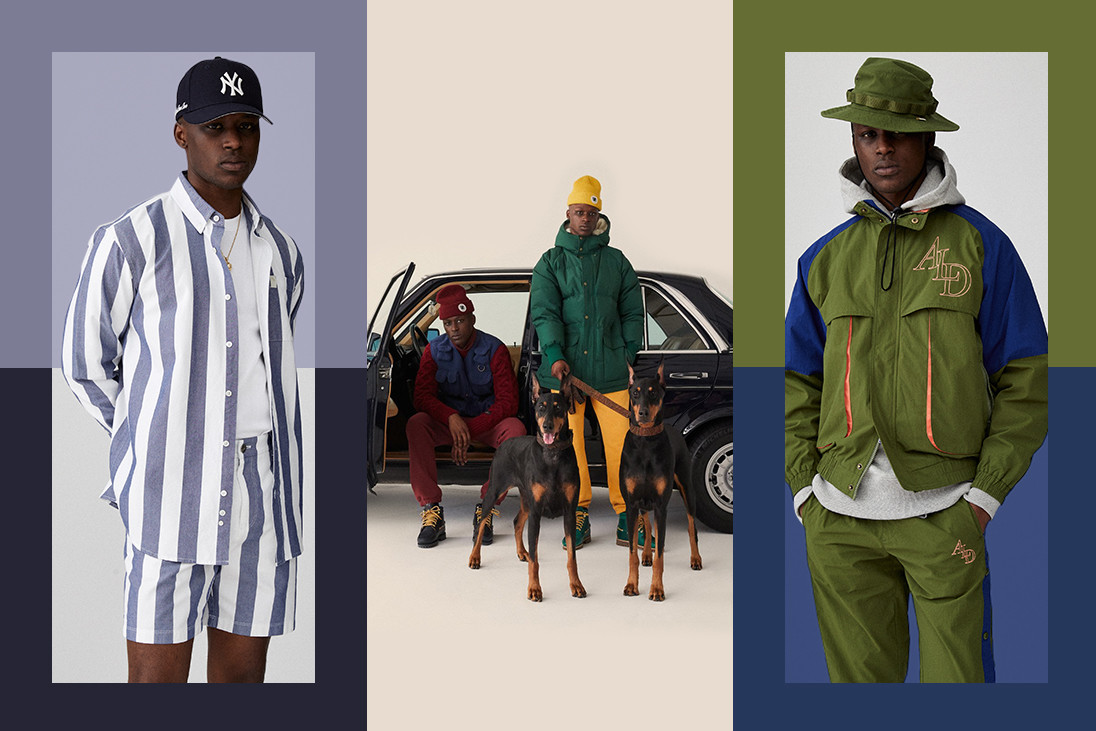Streetwear once considered a niche fashion movement rooted in urban culture, has evolved into a global phenomenon, influencing designers, celebrities, and everyday fashion enthusiasts worldwide. From its beginnings in the skate and hip-hop scenes of the United States, streetwear has transcended geographical boundaries, blending elements from various cultures and creating a diverse and ever-evolving style. The globalization of streetwear has resulted in a cross-cultural exchange of trends, designs, and influences, shaping how people approach fashion today. Here’s a look at some of the key trends in streetwear worldwide.
1. American Streetwear: A Legacy of Hip-Hop and Skate Culture
The United States, particularly cities like New York and Los Angeles, remains at the heart of streetwear culture. American streetwear has roots in the skateboarding, hip-hop, and punk scenes of the 1980s and 1990s, with brands like Supreme, Stüssy, and BAPE gaining iconic status. Bold graphics, oversized silhouettes, and logo-centric designs characterize the signature styles of American streetwear. High-end collaborations between streetwear brands and luxury labels, such as the partnership between Louis Vuitton and Virgil Abloh’s Off-White, have further blurred the lines between street style and high fashion, making streetwear a powerful force in the global fashion industry.
2. Japanese Streetwear: Craftsmanship Meets Innovation
Japan’s streetwear scene has long been admired for its unique blend of traditional craftsmanship and innovative design. Japanese brands like Comme des Garçons, A Bathing Ape (BAPE), and Neighborhood have been instrumental in shaping global streetwear trends. Japanese streetwear often features a fusion of Eastern and Western influences, incorporating anime, punk, and workwear elements. Japanese streetwear designers are known for their meticulous attention to detail and use of high-quality fabrics. The concept of “street couture” is also prominent in Japan, where streetwear brands collaborate with luxury houses to create exclusive, high-end pieces. This attention to detail and innovation in design has made Japanese streetwear highly influential worldwide.
3. European Streetwear: Minimalism and High Fashion Fusion
In Europe, streetwear has adopted a more minimalist and elevated aesthetic, blending casual street style with luxury fashion. Countries like France, Italy, and the United Kingdom have seen the rise of high-end streetwear brands such as Balenciaga, Off-White, and Vetements. These brands often incorporate sleek, modern designs with subtle branding and sophisticated cuts, offering a more polished take on streetwear. European streetwear also emphasizes the intersection of street culture and high fashion, with collaborations between luxury fashion houses and streetwear labels becoming increasingly common. This fusion of high and low fashion has made European streetwear a significant global player.
4. South Korean Streetwear: K-Pop and Digital Influence
South Korea’s streetwear scene has become a major global influencer in recent years, mainly due to the rise of K-pop and the country’s vibrant digital culture. Brands like Ader Error, Wooyoungmi, and the popular online retailer Musinsa have gained a cult following. South Korean streetwear is known for its bold, oversized silhouettes, playful graphics, and futuristic and retro elements. K-pop idols, often seen sporting these streetwear brands, have become influential fashion icons, helping to spread these trends globally. The power of social media and digital platforms like Instagram and YouTube has played a huge role in disseminating South Korean streetwear, making it a key player in global fashion.
5. Chinese Streetwear: The Rise of Local Brands
China has quickly become a powerhouse in the streetwear industry, with local brands like Li-Ning and Sankuanz gaining international recognition. Chinese streetwear often draws inspiration from traditional Chinese art and culture, blending it with contemporary street style to create something uniquely global. In addition, Chinese fashion influencers and celebrities have helped popularize local streetwear brands at home and abroad. China’s growing influence in fashion has increased demand for Chinese streetwear as global consumers seek to embrace new, locally inspired designs.
6. Middle Eastern Streetwear: Luxury Meets Tradition
In the Middle East, streetwear has become an essential expression of youthful rebellion and individuality while respecting the region’s traditional values. Brands like Fendi Dior and local labels like Arabian Streetwear have created collections that fuse street culture with opulence, incorporating intricate embroidery and luxe materials. The Middle East’s streetwear scene often merges Western urban influences with traditional Middle Eastern clothing like the thobe or abaya, creating unique hybrid styles. This intersection of luxury and tradition makes Middle Eastern streetwear a noteworthy global influence.
7. Latin American Streetwear: Vibrant and Colorful Designs
In Latin America, streetwear is often characterized by its vibrant colors, bold patterns, and incorporation of local cultural elements. Brands from Brazil, Mexico, and Argentina are gaining attention for their unique takes on street fashion, often combining elements of indigenous art with modern urban designs. Latin American streetwear embraces diversity and individuality, focusing on inclusivity and sustainability. The influence of reggaeton and Latin pop music and the rise of digital platforms have helped Latin American streetwear gain global popularity, with international brands collaborating with local artists to bring attention to the region’s streetwear culture.
Conclusion
The globalization of streetwear has led to a dynamic exchange of cultural influences and trends, creating a diverse, eclectic fashion movement that resonates with people from all corners of the globe. From the bold, graphic-heavy styles of American streetwear to the craftsmanship and innovation of Japanese designs, streetwear continues to evolve and merge different cultural elements. As it continues to grow in influence, streetwear will undoubtedly remain a significant force in shaping the future of global fashion, reflecting the world’s increasing interconnectedness and the fluidity of cultural exchange.

